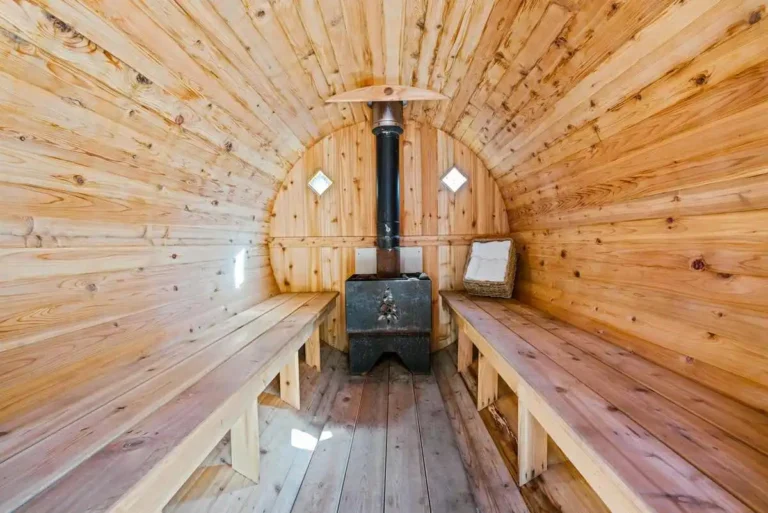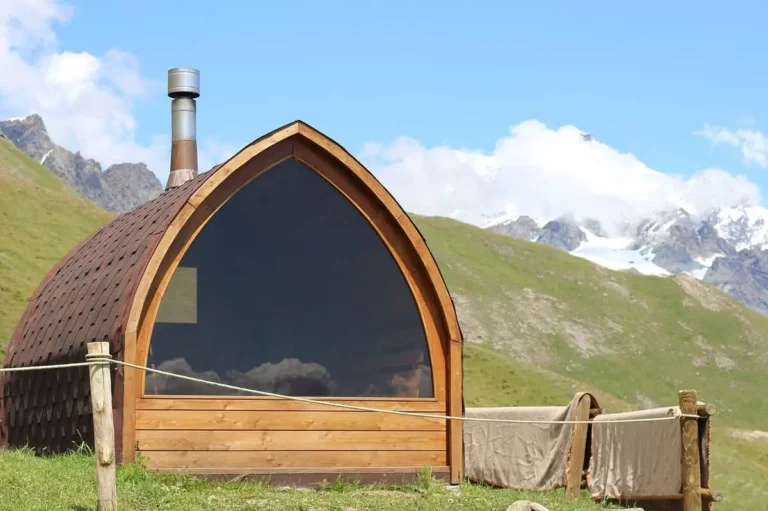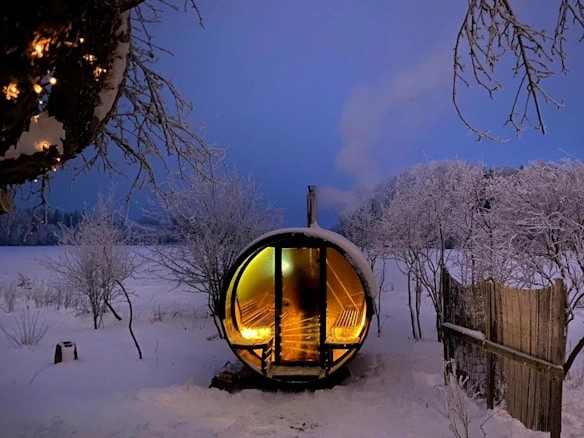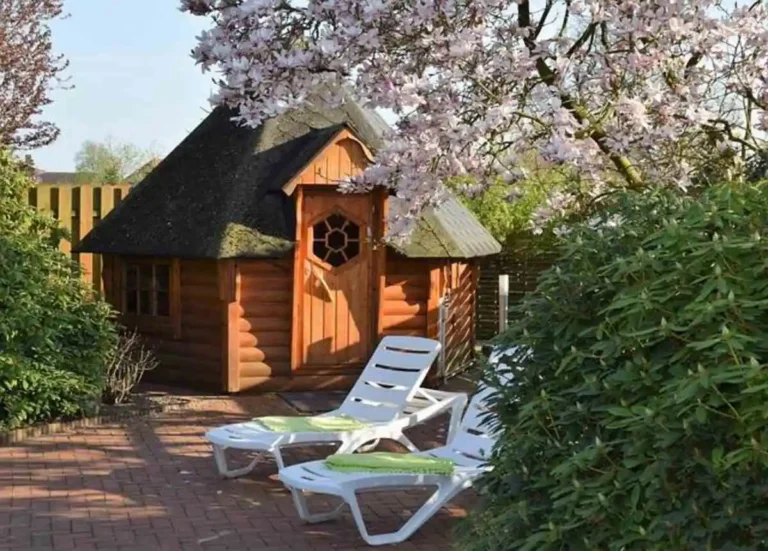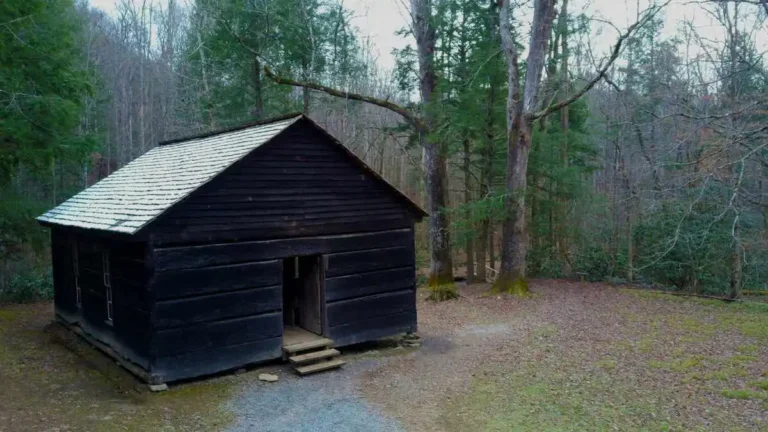Where to Place a Sauna in Your Home: Key Considerations and Tips
Deciding where to put a sauna in your house? Basements, spare rooms, or outdoor spaces like gazebos are top choices—just ensure proper space, ventilation, and convenience for daily use.
When placed with intent, a sauna becomes an adjunct to relaxation, a health elixir cultivated by simple, immediate access to heat therapy. Consider factors like privacy, electrical access, and proximity to water sources.
In this guide, I’ll walk you through how to figure out the best sauna location to turn your home into the ultimate wellness hideaway.
Key Factors in Sauna Placement
Choosing where to put a sauna in your house involves balancing functionality and comfort. Start by evaluating high-priority locations that offer easy access and frequent use. Consider spaces like basements, spare rooms, or outdoor areas – key factors include proper ventilation, electrical access, and privacy. Whether you prefer an indoor retreat or backyard oasis, selecting the right spot ensures your sauna becomes a relaxing, everyday escape.
Placing it near a bathroom or a changing area makes it easier to transition between a hot session and a refreshing shower. Think about how many people will regularly be using the sauna at once. A space that is at least 4’ by 4’ works nicely for a single user. In larger models, there is often a ton of room for friends or family to join you!
Secondly, safety should be a first consideration. Consider how close your setup would be to an electrical outlet, double-checking that your preferred spot has consistent access to power. Most saunas need a 240-volt outlet, especially the infrared types, so leave space for them.
Ventilation is just as important. You’re going to want a space that allows for airflow, with humidity levels between 20%-40% for traditional saunas. Consider the conditions of your basement or chosen location. Since a dry environment is critical to proper sauna performance, place your sauna in a location not exposed to wetness or moisture.
Aesthetics will be an important consideration in any sauna placement decision. You might wish to keep your sauna indoors, or you might want it to fit the aesthetic of your home. Select from an authentic Finnish sauna or an infrared unit.
Consider how the materials, colors, and overall aesthetic will match your current décor and furnishings. This goes a long way towards creating an aesthetically harmonious environment that you’ll feel comfortable using daily.
Finally, consider the potential effects of sauna placement on your property value. Buyers in your area might be clamoring for saunas, and a well-placed sauna can lure these thousands of additional buyers. It makes your home more inviting and aesthetically pleasing.
Installing it in a garage opens up enough space to consider larger, more luxurious models. This layout not only benefits the staff but can be used as a unique selling point.
Indoor vs. Outdoor Saunas: Key Differences
Determining where to put a sauna in your house means weighing indoor vs outdoor options. Indoor locations like basements offer convenience, while outdoor setups create a natural retreat – your choice depends on space, climate and preferred atmosphere.
Space and Structural Requirements
Whether you’re planning indoor use vs. Outdoor use, getting the proper space for your sauna is key. Indoor saunas need to be especially careful to measure so their sauna fits and feels comfortable without taking over the rest of the room.
Think as well about your building’s structural load capacity, particularly if you’re installing an outdoor sauna on an upper story. The last thing you want is to negatively impact your home from the inside out.
Whether wood-burning or electric, an even, flat surface will be required for installation. Considering your home’s design, you might have to consider some other changes to allow for the sauna’s size.
Indoor saunas can usually only fit one or two people, but outdoor saunas may fit your larger friends and family members, providing more collaborative social experiences.
Climate Considerations
That said, I’d argue that the local climate should have the biggest influence on your choice. While outdoor saunas should be built to withstand the most extreme elements, they do provide the ability to use the sauna year-round.
Brutal winter conditions or perhaps very hot summer weather could affect performance and time spent inside the sauna. Analyzing how temperature fluctuates and the level of humidity in your area can help you figure out if an outdoor sauna is feasible.
An indoor sauna may heat up the whole house too, a great advantage in the coldest winter months, but too much during the hottest summer days.
Privacy and Aesthetic Preferences
Privacy is a big concern. Indoor saunas afford a more private sauna experience, better suited for a personal retreat.
Determining where to put a sauna in your house outdoors involves balancing privacy and design. Choose a location shielded from neighbors and weather, while selecting materials that visually connect with your home’s architecture for a cohesive look.
Landscaping or fencing can increase the privacy of your outdoor sauna. An indoor sauna can easily go with the flow of your home’s interior design.
Best Indoor Sauna Locations
Deciding where to put your new indoor sauna can make or break the experience. Each area of interest has its distinct advantages and drawbacks. We’ll compare their advantages and disadvantages to get you one step closer to finding the ideal sauna for your home.
Basement Sauna Benefits and Drawbacks
Adding a sauna to your basement offers exclusive use of the sauna along with a perception of seclusion and privacy as well as effective use of space. One needs to keep in mind the possibility of dampness, which can be troublesome and even incapacitating for sauna use.
We’ve learned that maintenance of a dry environment is key, as saunas like humidity. Additional sealant in corner placements can improve insulation and keep cold air out, so you can have the best sauna experience possible.
Garage Conversion for a Sauna
Garages are a great choice for sauna placement because they often have plenty of room. This will allow room for larger sauna models and help improve airflow.
Condensation control is key—make sure to install a built-in drip tray. Consider the garage’s insulation and heating capabilities to make sure your sauna will be equally enjoyable.
Accessibility, availing a garage to house your sauna, would allow you to convert the space to much more than a sauna.
Upstairs Sauna Installation Considerations
It’s entirely possible to turn an unused upstairs space into a sauna, particularly with the lightweight pre-built models. These saunas make installation easy, even on upper-level buildings.
Access to plumbing and electrical outlets will improve convenience, while soundproofing features will keep noise pollution out, setting you up for a calming experience.
Bathroom Sauna Integration
Adding a sauna to an already planned bathroom renovation makes wonderful sense since you’ll have easy access to a bathing area as well. Smart design choices can preserve the bathroom’s existing functionality while integrating a sauna.
A little due diligence on plumbing and electrical requirements will set you up for a smooth installation.
Dedicated Wellness Room
Designing a purpose-built wellness room for regular sauna use establishes a fantastic, calming environment for wellness and renewal experiences. This functional room can include other wellness-focused offerings, such as yoga or massage facilities.
Intentional floor plan and design features promote serenity. Expenses will depend on the particular conversion.
Repurposing a Storage Closet
Converting a utility or storage closet into a small sauna is a great way to use this underutilized area. Space-saving designs are possible without compromising aesthetics or utility.
Making ventilation and electrical accommodations will save you time and money during installation and ensure you have a relaxing retreat with a small footprint.
1. Essential Requirements for Indoor Sauna Placement
Finding the ideal location for indoor sauna installation means paying close attention to a few key requirements. Every consideration plays a role in developing a safe, functional, and ultimately enjoyable sauna experience.
2. Assess Available Physical Space
Start by taking measurements of the proposed space. This will help to make sure that the sauna physically fits without overwhelming the area.
So if you want a sauna that’s 6’ x 8’, make sure there’s plenty of space around it available for walking around it. Think about nearby furniture and fixtures to help establish a welcoming environment.
Consider the ceiling height as well. A height of 7 feet is preferable to comfortably stand and move around and enjoy the sauna experience. Lastly, plan for ease of access, making it comfortable for users to step in and out without obstruction.
3. Evaluate Structural Load Capacity
Examining the floor’s capacity to bear the sauna’s weight is key, especially if it’s on a higher floor. Saunas can easily weigh 300 to more than 1,000 pounds, depending on their size and materials.
Check local building codes to ensure that you can meet the load-bearing requirements. If they are, you may need to reinforce the floor to maintain safety. A thorough inspection of the structure’s integrity can help prevent problems further down the road.
4. Plan for Adequate Ventilation
Proper ventilation practices are essential for preventing indoor pollution and ensuring clean air within the sauna. Figure out the most effective ways to provide airflow, such as with exhaust fans or well-placed windows.
Proper fresh air intake is just as crucial to avoid a buildup of stale air over time. Just be sure that the ventilation options you choose won’t interfere with the sauna’s ability to heat up effectively.
5. Ensure Plumbing and Electrical Proximity
When planning your sauna setup, start by assessing nearby plumbing and electrical access—this ensures efficient operation while minimizing installation costs. For those concerned do home saunas use a lot of electricity, strategic placement near existing circuits can reduce energy waste. Upgrade existing utilities when possible to support your sauna’s power needs (typically 3-8 kW for standard models) without overloading your system.
For any electrical installation, it’s always best to hire skilled professionals. Ensure that the surrounding power supply can meet the sauna’s energy needs to ensure optimal performance.
6. Comply with Building Codes and Permits
Study your local building codes to make sure you’re in compliance before you install your sauna. Getting the proper permits is often one of the most important steps in the process.
Know what inspections will be needed throughout the installation process to ensure you are meeting safety codes.
7. Address Moisture Management
Keeping high levels of moisture out of the structure is key in protecting surrounding elements from potential damage. Consider the sauna’s insulation characteristics to prevent moisture from escaping the unit.
For outdoor saunas, having a smart drainage system goes a long way, and for indoor saunas, humidity control measures keep the rest of the house safe from too much moisture.
8. Prioritize Accessibility and Safety
Accessibility is a key consideration. Make sure the sauna is easy to enter and exit for all intended users, including people with mobility challenges.
Safety features, such as handrails and non-slip flooring, help foster a safe environment. Consider placing emergency shut-off switches for electrical saunas to further increase safety.
9. Consider Flooring Options
Just as what wood is a sauna made of matters for heat retention and durability, choosing the right flooring is crucial. Avoid carpet (fire risk) and opt for non-slip, moisture-resistant materials that complement traditional cedar or hemlock sauna walls.
Materials that hold up well in sauna conditions, such as tiles, vinyl, or treated wood, are durable choices. Make sure to use a moisture-proof underlayment to avoid damaging the subfloor.
10. Think About Long-Term Maintenance
Regular upkeep is the best way to ensure your sauna stays healthy for years to come. Set long-term cleaning routines and figure out which products will be best for cleaning and maintenance.
Think about how easy the sauna will be to get to should you ever need a repair or maintenance job done.
Addressing Sauna Safety Concerns
Safety should guide where to put a sauna in your house. Whether indoors or outside, proper placement reduces fire risks, ensures correct electrical installation, and maintains safe temperatures, crucial factors for creating both a secure and enjoyable sauna experience.
Preventing Fire and Electrical Hazards
Safer electrical installations are key. Fire hazard wiring should be performed by a qualified electrician. Fewer dangers arise when the sauna is built with fireproof materials. For instance, heat-resistant boards can shield walls, and good insulation helps keep surfaces from becoming dangerously hot.
Electrical safety is crucial when choosing where to put a sauna in your house. Use dedicated, labeled outlets for equipment and schedule regular inspections, especially important in moist environments like bathrooms or outdoor installations where electrical components face extra stress.
Mitigating Flooding Risks
Indoor and outdoor saunas fall under low flooding risk categories, but safety measures should be taken. For outdoor saunas, algae or other growths can be avoided if a proper drainage system is implemented. This helps to direct water around the building, helping to prevent destructive buildup.
Indoors, moisture management techniques, like using waterproof flooring and ensuring proper ventilation, protect against water-related safety hazards. Consistent monitoring of drainage systems ensures they remain clear and effective, preventing further flooding from occurring.
Maintaining Safe Temperatures
Maintaining proper sauna temperatures is essential for user safety and comfort. While the average temperature of a sauna typically ranges between 150-195°F, smart monitoring systems help ensure these levels stay within a safe, therapeutic range. With accessible temperature controls, users can relax and enjoy their sauna experience without worrying about overheating, creating an ideal balance between safety and the desired health benefits.
Well-designed insulation is essential for heating quickly and consistently, enhancing sauna enjoyment. That’s why it’s so important to make users aware of safe sauna practices. This means educating them on suggested duration limits and hydration requirements to cultivate a safe environment.
Emergency Shut-Off and Access
For electrical saunas, easy access to emergency shut-off switches should be standard. Providing clear pathways that allow for quick exits during emergencies can be lifesaving.
Signage outlining emergency procedures ensures that all users are aware of evacuation procedures should an issue arise. Educating all users on safety procedures allows everyone to take quick action in the event of an emergency.
Ventilation and Heating System Needs
When incorporating a sauna into your home, knowing the ventilation and heating system needs is critical for a quality sauna experience. Adequate air circulation paired with appropriate, effective heating will improve comfort and safety. Let’s take a closer look at each of these vital elements.
Exhaust Fan Placement
Determining optimal placement for exhaust fans is an essential first step. Set fans up toward the ceiling of the sauna to cause hot air to exit. This arrangement helps ensure that fresh air is drawn in from lower-lying locations.
Failing to position fans directly, or away from heat sources, will trigger overheating and alarm-triggering damages. Second, fan capacity is critical – a properly sized fan will more thoroughly remove moist air, lessening the likelihood of mold formation.
Routine inspections keep the building’s ventilation and heating system operating properly, so we continue to have a healthy and comfortable environment.
Fresh Air Intake Strategies
Bringing new air into the sauna can be done in a number of ways. Passive intake vents allow fresh air to enter without cooling the sauna’s heat. Managing new airflow, which is necessary, while keeping the warmth in is central to their success.
With adjustable vents, you can regulate airflow for maximum comfort while in the saddle. Regular air quality monitoring allows you to create a truly healthy environment, which will make your sauna experience more enjoyable.
Heater Type and Location
Selecting the right type of heater can make a big impact on your sauna’s efficiency needs. Electric heaters have an easy convenience but wood-burning electric appliances have a cozy, crackling experience you just can’t replicate.
Infrared heaters heat up quickly, which is one of the things the infrared heaters advantages that they the most known for. Placement of the heater is critical for the heater to properly distribute heat evenly throughout the entire sauna.
Energy efficiency should be a top priority in sauna performance testing, as some heaters consume four times more electricity than others. While maintaining heating elements through yearly checks can extend their lifespan and prevent costly repairs, it’s also important to consider operational factors like the ideal temperature for infrared sauna sessions—typically between 120°F and 140°F—to balance comfort, safety, and energy use. This combination of proper maintenance and temperature management maximizes both savings and performance.
Plumbing and Electrical Considerations
If you have ever considered installing a sauna in your home, you may have found the plumbing and electrical considerations daunting. These aspects help your sauna bring you the best experience possible with safety and reliability.
Requirements Vary
You’ll need to know the particular requirements for your model of sauna. Generally, electric saunas require a separate circuit, whereas infrared models can be more flexible. Your sauna’s manual will give you the most specific guidance.
Power Supply Requirements
Use this handy guide to determine the electrical supply required for the size sauna you decide on. After that, think about the heater you decided to go with. Whether you choose a larger sauna or one with a higher wattage heater requires more power.
Finally, making sure that you have enough amperage for your sauna is critical. Without it, the heater will have a harder time bringing the water up to temperature, causing excessive inefficiency.
Using dedicated electric circuits is important to use EV-ready dedicated circuits. Doing so protects against overloads that would trip breakers or otherwise damage your electrical system.
Preventative measures like regular inspections of your electrical system keep you safe and feeling confident that what’s running behind the scenes is doing so seamlessly. Making sure you monitor these particulars will save you a lot of trouble down the line.
Water Line Access and Drainage
Second, think through water line access – this is critical if your sauna is designed with a steam function requiring a water source. Not all saunas require this, but if yours does, make sure there’s convenient access to any current plumbing.
Flooding is not just an aftereffect of a storm—it can be guarded against with proper drainage systems. If they are not well drained, you risk extensive, expensive water damage to your foundation and home.
Look at what the odds are for being able to tie into your existing plumbing. Occasionally, extending existing lines even makes sense.
Routine maintenance of piped drainage systems ensures that they continue to drain promptly during storm events. It further prevents clogs and other future problems.
Cost Factors for Sauna Installation
Installing a sauna in your home is an exciting investment that involves several cost factors to consider. Knowing these factors can determine the decisions you need to make to have a positive experience from start to finish.
Sauna Kit vs. Custom Build
When it comes to installation, you’ll find two primary options: sauna kits and custom builds. Sauna kits are prefabricated, usually more cost-effective, and less time-consuming to put together. They don’t provide the level of customization you can get with a custom build.
With custom builds, you can design a sauna that’s tailored to your unique space and personal tastes. Get ready for increased expenses and lengthy installation times. When considering your budget, you’ll need to balance the initial expense of sauna kits versus possible long-term happiness with a personalized solution.
Material Costs and Labor
Material choices have a major impact on the overall cost of your sauna. Cedar and hemlock are the most common materials used, with varying price points. DIY installation will save largely on labor costs, but DIY sauna installation requires a high level of skill and level of commitment.
If you decide to have your sauna installed professionally, be sure to include those costs too. Account for potential last-minute costs during installation. Depending on your space, you might need extra materials or adjustments made, and these expenses can quickly eat into your budget.
Electrical and Plumbing Expenses
Installing a sauna can sometimes require extensive electrical and plumbing work, especially if you need specific heating elements or water connections. It’s equally important to hire professionals for these residential or commercial installations to ensure safety, code compliance, and peace of mind.
By budgeting for these services from the beginning, you won’t have any surprises come up down the road. Think about the future cost of operation and maintenance on these systems, such as repairing or retrofitting them.
Ongoing Operational Costs
After your sauna installation, ongoing operational costs are a new factor to consider. Electricity usage for heating of the sauna will vary depending on the model and frequency of use. Keep in mind that regular maintenance, including cleaning and routine repairs, will be important as well to ensure you’re getting the most out of your sauna.
Make sure to factor these repeat costs into your long-term budget, so you can fully enjoy your sauna without overspending.
Conclusion
Find the best place in your house to put a sauna and increase your home’s comfort and wellness features. Consider the space available and the atmosphere you hope to achieve. Indoor saunas provide convenience and privacy, but outdoor saunas can provide a truly refreshing escape. Safety and practicality should again be your top priority. Be certain you address all plumbing, electrical, and sauna ventilation requirements. Plan your expenses to accommodate your budget.
With a little foresight, your new sauna can be a warming retreat. Discover where to put a sauna in your house. From improving the immune system to relieving everyday tension, you can reap luxurious relaxation and bodily health benefits conveniently at home. Begin the transformation of your home into a sanctuary of well-being and relaxation.


